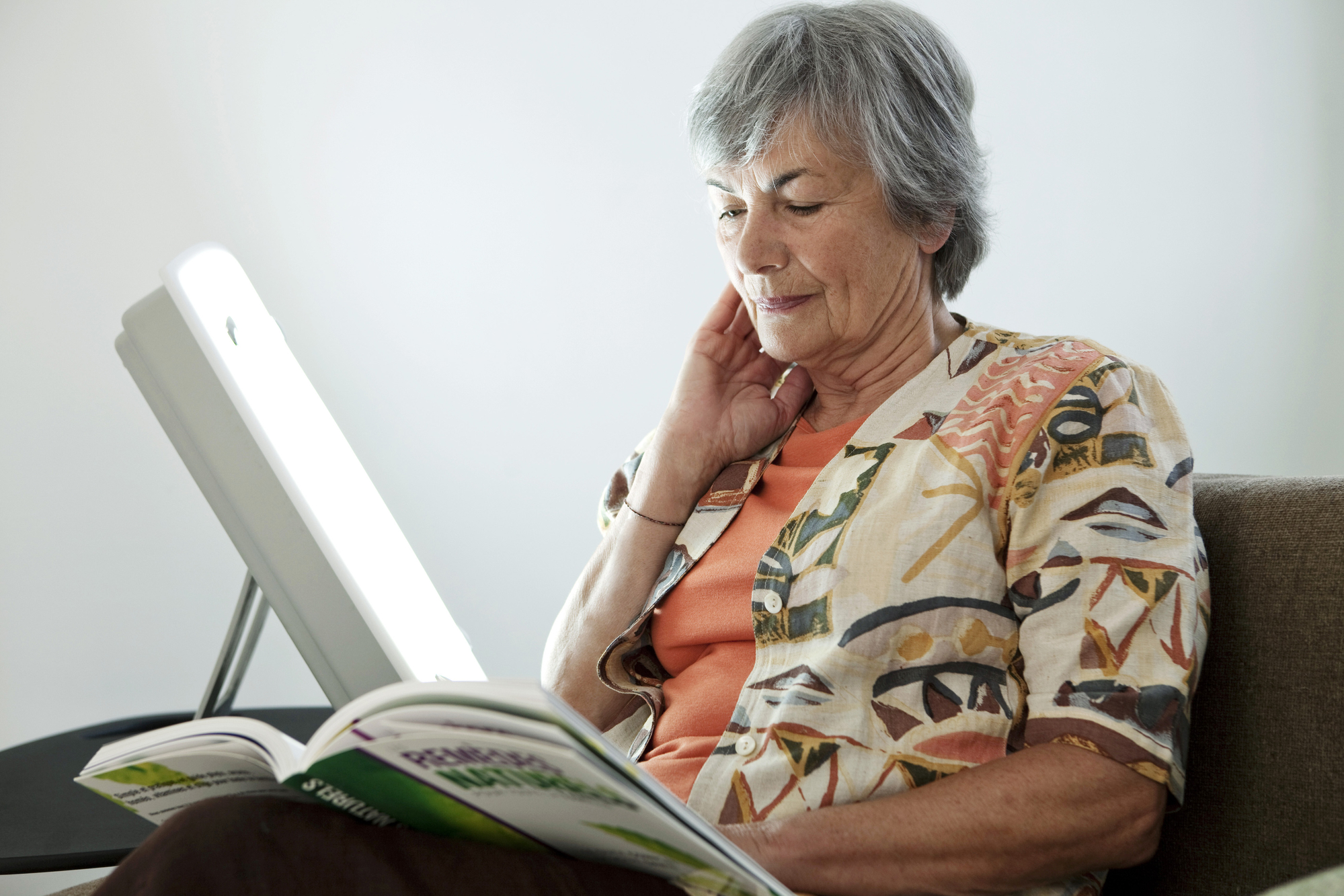
Benefits of Bright Light Therapy for Seniors
Bright light therapy holds promise for sleep problems in the elderly. This is a treatment used for those who suffer from circadian rhythm sleep disorders. Everyone has an internal clock that tells it when it’s time to sleep and when it’s time to wake up; this clock sits just above an area in the brain where the nerves travel to the eyes — referred to as the SCN within the hypothalamus. This area essentially controls the circadian rhythms in your body that regulate body temperature, alertness and the daily cycle of many hormones, according to the American Academy of Sleep Medicine. Sleep problems plague everyone but are especially challenging to seniors in end of life care. If you have a loved one who is experiencing this in Santa Clara, you’ll find this article interesting.
Why are Circadian Rhythms so Important?
The word “circadian” basically means something that occurs in a cycle of 24 hours. These rhythms make you feel drowsy when you’re tired or awake and alert when it’s time to get things done. However, some people have a circadian rhythm sleep disorder, which causes their natural sleep time to overlap and interfere with regular awake activities such as school or work. Your internal clock sets itself according to how much you’re exposed to bright light, most notably sunlight. Sometimes we can’t get enough bright light exposure and this messes with our internal clock. This is where light therapy comes in, used as a method to treat people with circadian rhythm sleep disorders.
BLT for the Elderly
When it comes to seniors, bright light therapy, or BLT, can be especially beneficial when it comes to treating sleep problems in the elderly. BLT for patients with Alzheimer’s disease, in particular, has resulted in significant improvement. A study outlined by the National Institutes of Health found that BLT was effective in reducing daytime nap duration, helping to advance the peak circadian rhythm and increasing activity levels during the day and melatonin levels during the night.
It’s often used in combination with other non-pharmacological approaches such as walking outdoors, taking part in social activities and exercising, which displayed greater effects than independent BLT on sleep and cognitive function. The goal for treating patients suffering from circadian rhythm problems is to employ a combination of healthy sleep patterns with an internal clock that is set for the right time, allowing older adults, particularly those nearing the end of life who need their rest, to enjoy the benefits of restful sleep.
In a nutshell, light therapy can help you “re-set” your internal clock that may have been knocked off its regular schedule for one reason or another. When you have regular sleep patterns, you keep the clock set at the new time. Light therapy is used in conjunction with a larger treatment plan that should be overseen by a doctor skilled in sleep disorders.
In addition to helping the elderly establish good sleeping patterns, bright light therapy has also been found to significantly decrease symptoms of depression and increase functioning in people with bipolar disorder, according to Northwestern Medicine.
How is Bright Light Therapy Administered?
Activating the hypothalamus at certain times of the day can restore normal circadian rhythms. The therapy is nothing fancy. It usually entails just sitting next to a special light box for about a half hour, usually upon waking, says Harvard Medical School. These boxes give off 10,000 lux, which is a measure of light intensity that’s 100 times brighter than typical indoor lighting. Compare that to a bright sunny day, which is 50,000 lux or more. Eyes need to be open during light therapy but with eyes focused away from the direct source of light. While undergoing light therapy, you can read a book, chat with a friend or catch up on emails.
Light therapy can be used to treat a variety of conditions, points out the Mayo Clinic, such as:
- SAD (seasonal affective disorder)
- Depression
- Jet lag
- Sleep disorders
- Adjusting to a nighttime work schedule
- Dementia
As with any other treatment, there are side effects, even though bright light therapy is considered safe for all people, including the elderly. Those side effects can include:
- Eyestrain
- Nausea
- Headache
- Irritability or agitation
- Mania, euphoria, hyperactivity or agitation associated with bipolar disorder
Side effects can be managed by reducing treatment time, moving a bit farther away from the box, taking breaks or switching up the time of day. Your loved one’s home health and hospice team can work with the patient to come up with the best combination, time and intensity possible to help them restore healthy sleep habits.
Contact Pathways Home Health and Hospice
For more information on how bright light therapy may help your loved one in home health or hospice care, please contact us at 888-755-7855. We can help you work with your loved one to get them back on track for a restful night’s sleep.

